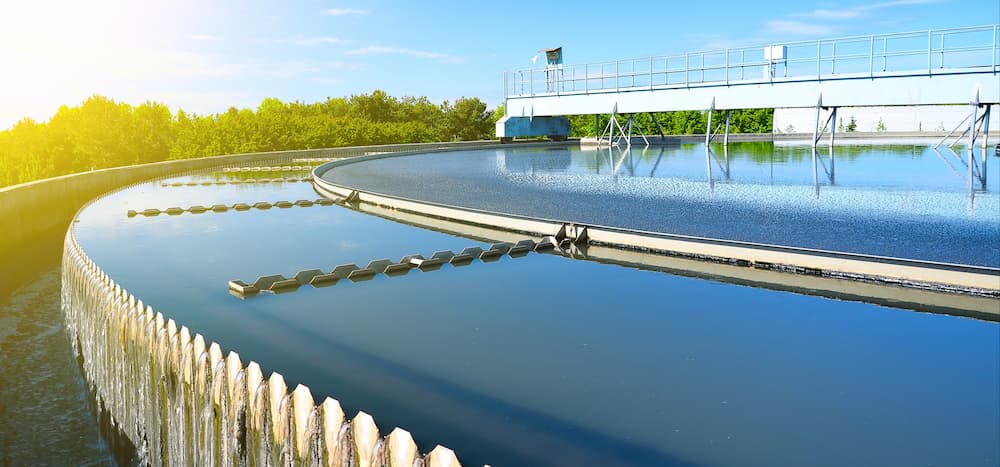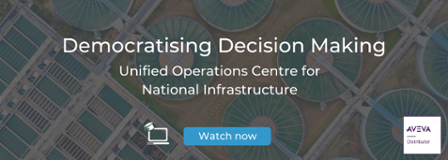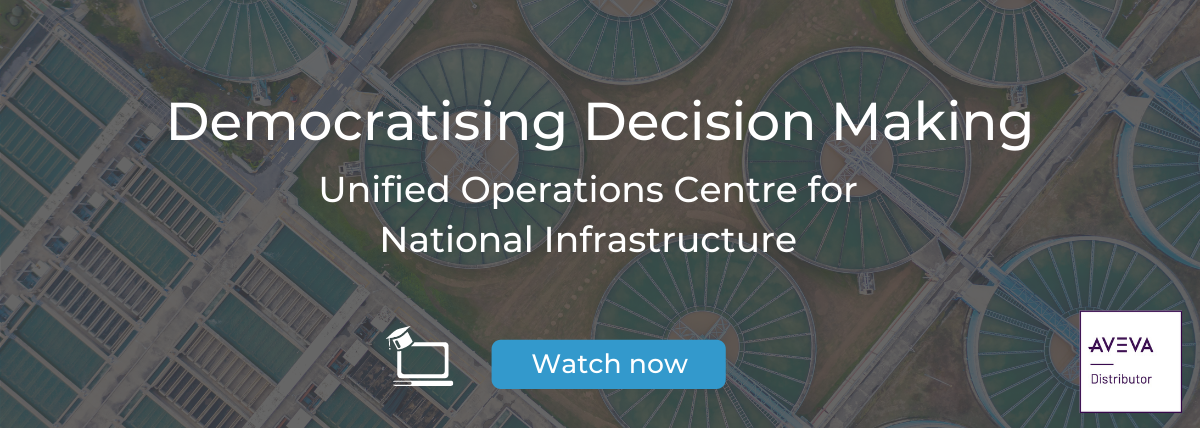The water/wastewater sector is a constant - unaffected by many of the market forces that affect other industries, water has always, and will always, be needed. This stability doesn’t translate directly to immunity from risk for operators. In fact, it is quite the opposite, the sector has several unique challenges to overcome and is one of the more stringent regulatory environments of any sector.
Within the UK water/wastewater industry there are also risks associated with assets, availability, and most importantly, safety and health risks to employees and the general public. Set this into the context of increased water demand and urbanisation, and the reality for operators is an industry as reliant on the promise of digitisation as any.
The era of digital transformation offers a huge opportunity for water companies to make significant strides in mitigating all of these risks and building a more flexible and resilient approach fit to meet the challenges of the future. At an operational level, it requires the implementation of an integrated, edge to enterprise, “system of systems”. Such an approach creates a strong digital thread and offers managers visibility of a single version of the truth for their operations when brought together on a software platform such as the Unified Operations Centre (UOC) from AVEVA.

Edge-to-enterprise and everything in between
At every layer of a water/wastewater operation, there is a stakeholder with an objective. Just as owners need to understand every asset within their network, they must factor in every objective in order to implement a system that offers their human workforce the tools to excel.
Operators and maintenance technicians at the edge of the network are focused on keeping the facility running at optimal conditions and to achieve this they need a simple and secure way to access plant information in real-time.
Environmental managers have the hard task of ensuring the organisation is compliant with increasingly strict regulations. As this includes factors like air quality, odour nuisance from treatment plants, and pollution levels, accurate data is essential since without it, they wouldn’t be able to properly advise on issues like reducing carbon footprint or water leakage.
IT experts drive the system availability and resiliency. It is their responsibility to constantly review and upgrade systems whilst streamlining information flows.
Operations departmental leaders are all about operational efficiency, by working with other departments they strive to speed up the decision-making process. This is also the department usually responsible for responding to emergencies and reducing the chances of a shutdown.
Regional site managers are often responsible for worker supervision, enforcing plant procedures, training, and performance reviews. It is often in this job role that the balance of risk and opportunity must be assessed.
And at the summit of the organisation are the senior executives, focusing on growth and profit margins, as per their obligations towards their shareholders, who could be private investors, venture capitalists, global banks, or a combination of each. As with the environmental managers, senior executives need a steady flow of accurate data to complete their job well and mitigate risks. Their decisions, strategy and tactics have lasting implications for water/wastewater facilities.
With all the stakeholders identified, it is easy to see how information silos are formed as each wrestles available technology and budget to their requirements. But for all their differing focuses and objectives, there is a common theme. Each stakeholder wants the operation to run as efficiently as possible whilst reducing risk, whether that is a cybersecurity concern or a maintenance issue, they all want the same thing, and this can only be achieved with an edge-to-enterprise connectivity approach such as that which the UOC enables.
The United Operations Centre for Water/ Wastewater
In fact, every individual risk or concern facing the stakeholders can be addressed by an edge-to-enterprise approach. By centralising and contextualising the visualisation of all assets into a single platform, every member of the workforce is better equipped to deal with their individual risks.
For those operators onsite, the desired ability to access information securely from wherever they are is not limited to an overview. Operators can minimise the risk of unplanned downtime with an increased situational awareness of asset operating conditions. Drilling down with a real-time display, operators no longer have to react to a crisis, they can proactively prevent one. This ensures the organisation is meeting service level requirements and the human workforce isn’t put in danger by failing assets.
On the environmental side, where targets are putting increased pressure on water/wastewater companies, the answer is optimisation. The reduction of unplanned downtime means all assets are running as efficiently as possible. This already equates to an enterprise reducing its carbon footprint but UOC also enables the identification, correction and prevention of excess consumption and waste. The all-important highly skilled human workforce is also running as efficiently as possible, no longer responding to crisis events after they happen but deployed where their expertise is needed most. By reducing the time-consuming, repetitive tasks and completely removing paper-based reporting, operators have more time for key work and adding value through human ingenuity.
Cybersecurity has become a more important risk to mitigate for the water/wastewater sector. Very recently there was an issue of remote access going wrong for a US treatment plant, luckily there was a quick-thinking operator onsite. This event has illuminated the importance of robust cybersecurity in an industry that increasingly benefits from remote access and control. Not only does the AVEVA solution adhere to strict cybersecurity compliance rules, but it provides customers with the ability to update software regularly, ensuring the best protection. The UOC integrates IT and OT technology to provide further confidence in cybersecurity procedures and policies. With the tools to monitor, test and optimise cybersecurity approaches, water companies can easily visualise data and integrate video feeds to streamline decision making and report any anomalies quickly. UOC capabilities can take it one step further with machine learning, integrating alarm management and cybersecurity procedures to safeguard operations.
Operators working with UOC are empowered and informed when it comes to making fast decisions, they can access vital data in an easy to consume visualised way. All of this can be accessed remotely and securely, so they can rest easy, knowing they will be alerted to any issues in advance and that they have the tools to solve them.
Conclusion
Navigating the choppy waters of water/wastewater operations is no easy task. As customers become better informed and more environmentally aware, it paints a picture of a sector that would see brand-new high-cost assets deployed to meet the constantly rising demand. As we know in the water/wastewater sector, this just isn’t the case. Operators are under more pressure than ever to perform efficiently while keeping costs low, operators are having to deal with legacy equipment and responding to crises as they happen. The good news is that these risks (and more) can be mitigated through data that is often already available in water/wastewater operations – and where it is not, relatively cheap IIoT sensors can be retrofitted.
The Unified Operations Centre leverages this data, providing a low-cost and low-risk approach to digital transformation. Owners shouldn’t look to expensive ripping and replacing of assets (unless they don’t operate as intended) to make efficiency gains. Integration and unification of assets and people bring benefits that can be felt across the entire enterprise by every stakeholder.
A water/wastewater operation with a deployed UOC is the peak of efficiency, now and for the future. Throughout the enterprise, in real-time, owners and operators can securely access a single version of the truth leading to a more informed workforce. This enables better and faster decision-making when it comes to maintenance and energy wastage. Each stakeholder can rest easy knowing they can access this information in a secure way with accurate data to navigate the strict compliance regulations of the sector. The software/hardware agnostic capability and simple to use nature of the UOC means the operation is ready to expand and meet customer demand, whether that is purchasing new equipment or hiring new staff.



